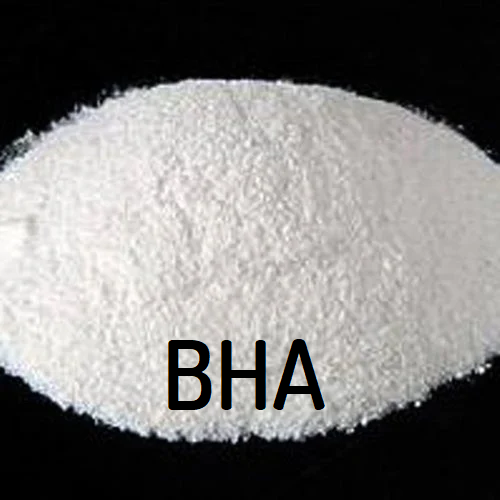Butylated Hydroxyanisole (BHA) is a synthetic antioxidant used as a food preservative and in various industries. It is known for its ability to prevent the oxidation of fats and oils, extending the shelf life of many products.
Historical Context
BHA was first approved for use in foods by the U.S. Food and Drug Administration (FDA) in the 1950s. Its adoption as an antioxidant preservative grew in response to the need for longer-lasting food products.
Production and Sourcing
BHA is chemically synthesized through the reaction of p-anisidine with butyl chloride. It is available in both natural and synthetic forms. The sourcing of BHA for industrial use is primarily through chemical production.
Applications
BHA is commonly used in various applications:
- Food Preservation: BHA helps prevent the rancidity of fats and oils in processed foods, including snacks, cereals, and baked goods.
- Cosmetics: It is used in cosmetics and personal care products to extend their shelf life.
- Industrial Uses: BHA finds applications in rubber and petroleum products to prevent degradation.
Regulatory Framework
The use of BHA in food and cosmetics is regulated by health authorities in different countries. Maximum allowable levels are specified to ensure consumer safety.
Consumer Concerns
Consumer concerns regarding BHA primarily revolve around its safety as a food additive. Some individuals may have sensitivities or allergies to BHA, while others express concerns about its potential long-term health effects.
Health and Safety
Studies on the safety of BHA have led to varying conclusions. Some research suggests potential health risks associated with high BHA intake, while regulatory bodies deem it safe for consumption within established limits.
Applicable Products
Products that may contain BHA include:
- Packaged Snacks: Chips, crackers, and other snacks.
- Breakfast Cereals: Many breakfast cereals use BHA to maintain product freshness.
- Cosmetics: Lipsticks, eyeshadows, and skin creams may contain BHA as an antioxidant.
Alternatives
In response to consumer demand for natural alternatives, some food manufacturers have shifted to using other antioxidants like vitamin E (tocopherols) or ascorbic acid (vitamin C).
Scientific Research
Scientific research has explored the potential health effects of BHA. Studies have examined its role as an antioxidant, its impact on the human body, and the potential for carcinogenicity.
Chemical Properties
BHA is a white, waxy solid with a slightly sweet odor. It is soluble in various organic solvents but has limited solubility in water.
Case Studies
Case studies related to BHA have assessed its safety and potential health risks. These studies often provide insights into the compound’s effects on different organisms.
Future Trends
Future trends in the use of food preservatives like BHA may include increased demand for natural and organic products, leading to innovations in alternative preservation methods.
Opinions
Opinions on BHA vary, with some advocating for its responsible use in food preservation and others expressing concerns about its potential health impacts.
Warnings
Some health authorities recommend moderation in the consumption of foods containing BHA, while others emphasize adherence to established safety limits.
Synonyms
Synonyms for Butylated Hydroxyanisole include “BHA,” “E320” (its European food additive number), and “butylhydroxyanisole.”
Conclusion
Butylated Hydroxyanisole (BHA) serves as a food preservative and antioxidant with a long history of use. Its safety and efficacy remain subjects of ongoing research and debate. As consumer preferences evolve towards natural alternatives, the use of BHA in various industries may continue to undergo changes.







